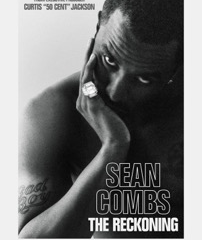Related: ‘Below Deck’ Cast Through the Years: A Guide to Who’s Dated Who
Advertisement
Luka Brunton Fred Jagueneau/Bravo
Luka Brunton‘s time on Below Deck Mediterranean has been riddled with romantic connections — and not all of them have taken place on board.
In 2023, Bravo fans were introduced to Luka on season 2 of Below Deck Down Under where he briefly got caught up in a love triangle with Jaimee Neale and Culver Bradbury.
Captain Jason Chambers later recommended Luka to Captain Sandy Yawn and he was offered a position on the deck team for season 8 of Below Deck Med, which aired months later. However, Ruan Irving forging his paperwork helped Luka move up the ranks from a provisional bosun to leading the exterior team.
Throughout the season, Luka was able to balance his job and his love life with surprising success. He developed a flirtationship with Natalya Scudder but it didn’t get far because she was trying to figure out her open relationship with an offscreen boyfriend.
From there, Luka turned on the charm with Jessika Asai, which became a season-long boatmance. Luka’s past with Below Deck Med alum Katie Flood also came to light while he was still on the Mustique.
Luka later confirmed to Us Weekly that he didn’t actually didn’t end up with anyone in the Below Deck universe.
“I’m in a relationship at the moment. [I’m] back with my partner that I was with before the show,” he revealed to Us during BravoCon in November 2023. “We split up [before] the show and we’re back together now. I don’t think she’s watching [this season]. It’s probably good.”
Keep scrolling for a guide to every connection Luka made during season 8 of Below Deck Med:
Courtesy of Jessika Asai/Instagram
It didn’t take long for sparks to fly between Luka and Natalya during season 8 of Below Deck Med. Despite being interested in each other, Natalya was actually hesitant to take it further because of a confusing open relationship with her then-boyfriend.
Natalya and Luka made out a few times but ultimately parted ways when she left early to figure out the issues in her personal life. The pair kept in touch though through flirty messages, which Luka didn’t tell Jessika about amid their fling.
“Just because [Jess and I] are hooking up and maybe I don’t want to be in a relationship doesn’t mean I don’t care about her. Everyone has their feelings,” he said in a January 2024 episode. “I never said to Jess that I wanted a relationship. So there’s no strings. Imagine if people found out I was texting Natalya.”
Courtesy of Jessika Asai/Instagram
After Luka realized he wasn’t going to hook up with Natalya, Jessika suddenly caught his eye. The twosome quickly moved from just flirting to a casual relationship throughout season 8. However, a lack of communication created issues when Jessika found out about Luka being in contact with Katie.
“This whole situation is really annoying. But at the same time, it is not my business on who he is talking to,” she told the cameras in a January 2024 episode. “I’m not going to deprive myself of having fun. I’m just going to go into all of this with my eyes open.”
Luka, for his part, wasn’t sweating the drama because he wasn’t expecting a future with Jessika.
“Obviously I like Jess a little bit more than a friend. We are not in a relationship. I’m not f—king dating Katie Flood. We’re just friends. Just friends. Even if I was texting her as more than a friend,” he said in a confessional before cutting himself off. “OK. Well, yeah. I don’t know.”
Luka Brunton and Katie Flood Bravo
Below Deck viewers were thrown for a loop when Luka randomly revealed he was on friendly terms with Katie, who appeared on a past season of Below Deck Med. Luka told everyone — including Captain Sandy — that there was nothing romantic between him and Katie.
“I’ve known Katie for like four years. She used to date one of my friends and I know that she’s worked with Sandy in the past,” he said on a December 2023 episode. “My history [with her]? We don’t really have any history. We’ve hung out a few times. What are you trying to get at?”
The jury is still out on whether Luka was telling the whole truth about his platonic bond with Katie.
Luka Brunton‘s time on Below Deck Mediterranean has been riddled with romantic connections — and not all of them have taken place on board. In 2023, Bravo fans were introduced to Luka on season 2 of Below Deck Down Under where he briefly got caught up in a love triangle with Jaimee Neale and Culver
Us Weekly Read More

50 Cent’s new Netflix docuseries about Sean “Diddy” Combs is more than a headline-grabbing exposé; it is a meticulous breakdown of how power, celebrity, and silence can collide in the entertainment industry.
Across its episodes, the series traces Diddy’s rise, the allegations that followed him for years, and the shocking footage and testimonies now forcing a wider cultural reckoning.

The docuseries follows Combs from hitmaker and business icon to a figure facing serious criminal conviction and public disgrace, mapping out decades of influence, branding, and behind-the-scenes behavior. Watching that arc shows how money, fame, and industry relationships can shield someone from scrutiny and delay accountability, even as disturbing accusations accumulate.

Exclusive footage of Diddy in private settings and in the tense days around his legal troubles reveals how carefully celebrity narratives are shaped, even in crisis.
Viewers can learn to question polished statements and recognize that what looks spontaneous in public is often the result of strategy, damage control, and legal calculation.
Interviews with alleged victims, former staff, and industry insiders describe patterns of control, fear, and emotional or physical harm that were long whispered about but rarely aired in this detail. Their stories underline how difficult it is to speak out against a powerful figure, teaching viewers why many survivors delay disclosure and why consistent patterns across multiple accounts matter.
As executive producer, 50 Cent uses his reputation and platform to push a project that leans into uncomfortable truths rather than protecting industry relationships. The series demonstrates how documentary storytelling can challenge established power structures, elevate marginalized voices, and pressure institutions to respond when traditional systems have failed.
Reactions to the doc—ranging from people calling it necessary and brave to others dismissing it as a vendetta or smear campaign—expose how emotionally invested audiences can be in defending or condemning a famous figure. Watching that debate unfold helps viewers see how fandom, nostalgia, and bias influence who is believed, and why conversations about “cancel culture” often mask deeper questions about justice and who is considered too powerful to fall.

A new Christmas-themed episode of South Park is scheduled to air with a central plot in which Satan is depicted as preparing for the birth of an Antichrist figure. The premise extends a season-long narrative arc that has involved Satan, Donald Trump, and apocalyptic rhetoric, positioning this holiday episode as a culmination of those storylines rather than a stand‑alone concept.
According to published synopses and entertainment coverage, the episode frames the Antichrist as part of a fictional storyline that blends religious symbolism with commentary on politics, media, and cultural fear. This follows earlier Season 28 episodes that introduced ideas about Trump fathering an Antichrist child and tech billionaire Peter Thiel obsessing over prophecy and end‑times narratives. The Christmas setting is presented as a contrast to the darker themes, reflecting the series’ pattern of pairing holiday imagery with controversial subject matter.
Coverage notes that some figures connected to Donald Trump’s political orbit have criticized the season’s portrayal of Trump and his allies, describing the show as relying on shock tactics rather than substantive critique. Commentators highlight that these objections are directed more at the depiction of real political figures and the show’s tone than at the specific theology of the Antichrist storyline.
At the time of reporting, there have not been widely reported, detailed statements from major religious leaders focused solely on this Christmas episode, though religion-focused criticism of South Park in general has a long history.
Entertainment outlets such as The Hollywood Reporter, Entertainment Weekly, Forbes, Slate, and USA Today describe the Antichrist arc as part of South Park’s ongoing use of Trump-era and tech-world politics as material for satire.
South Park is rated TV‑MA and is intended for adult audiences due to strong language, explicit themes, and frequent use of religious and political satire. Viewers who are sensitive to depictions of Satan, the Antichrist, or parodies involving real political figures may find this episode particularly objectionable, while others may view it as consistent with the show’s long‑running approach to controversial topics. As with previous episodes, individual responses are likely to vary widely, and the episode is best understood as part of an ongoing satirical series rather than a factual or theological statement.

Sydney Sweeney has decided she is finished watching strangers on the internet treat her face like a forensic project. After years of side‑by‑side screenshots, “then vs now” TikToks, and long comment threads wondering what work she has supposedly had done, the actor is now addressing the plastic surgery rumors directly—and using them to say something larger about how women are looked at in Hollywood and online.

Sweeney points out that people are often mistaking normal changes for procedures: she grew up on camera, her roles now come with big‑budget glam teams, and her body has shifted as she has trained, aged, and worked nonstop. Yet every new red‑carpet photo gets folded into a narrative that assumes surgeons, not time, are responsible. Rather than walking through a checklist of what is “real,” she emphasizes how bizarre it is that internet detectives comb through pores, noses, and jawlines as if they are owed an explanation for every contour of a woman’s face.
By speaking up, Sweeney is redirecting the conversation away from her features and toward the culture that obsesses over them.
She argues that the real issue isn’t whether an actress has had work done, but why audiences feel so entitled to dissect her body as public property in the first place.
For her, the constant speculation is less about curiosity and more about control—another way to tell women what they should look like and punish them when they do not fit. In calling out that dynamic, Sweeney isn’t just defending herself; she is forcing fans and followers to ask why tearing apart someone else’s appearance has become such a popular form of entertainment.


Colombia’s ‘Doll’ Arrest: Police Say a 23-Year-Old Orchestrated Hits, Including Her Ex’s Murder


Miley Cyrus Is Engaged to Maxx Morando


Disney Brings Beloved Characters to ChatGPT After $1 Billion OpenAI Deal


Luana Lopes Lara: How a 29‑Year‑Old Became the Youngest Self‑Made Woman Billionaire


Netflix Got Outbid: Paramount Drops a $108 Billion Cash Bomb on Warner Bros.


Anne Hathaway Just Turned Her Instagram Bio Into a 2026 Release Calendar


What We Can Learn Inside 50 Cent’s Explosive Diddy Documentary: 5 Reasons You Should Watch


Netflix’s $82.7 Billion Warner Bros Deal Signals the Rise of a New Hollywood Power